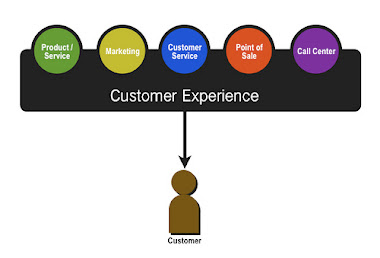Customer Loyalty is our Ultimate Criterion
I think that it is safe to state as a matter of fact that customer loyalty is key to business growth. Businesses that have customers who engage in more loyalty behaviors (e.g., stay longer, recommend, continue buying, increase share-of-wallet, more clicks/views) toward their company experience faster growth compared to businesses that have customers who engage in fewer loyalty behaviors. The key to growing one’s business, then, is to understand how to improve customer loyalty.
Seemingly disparate fields in the CxM space, whether explicitly or implicitly, all focus on increasing customer loyalty (isn’t optimizing customer loyalty the goal of all business solutions?). These disciplines include:
- Customer Loyalty Management (CLM): is the process of maximizing customer loyalty.
- Customer Relationship Management (CRM): is a strategy for managing a company’s interactions with customers, clients and sales prospects.
- Customer Value Management (CVM): is the process of managing each customer relationship with the goal of achieving maximum lifetime profit from the entire customer base.
Businesses Use Different Types of Customer Data to Increase Customer Loyalty
Each of the disciplines focus on using different types of customer data to increase customer loyalty. Businesses tailor ads that resonate with prospects’ personal values in order to attract types of customers (yes, some people are just more prone to buy, buy, buy; some are more likely to remain loyal). Businesses target marketing/sales campaigns to specific customers based on customers’ purchase/service history. Businesses measure different types of customer loyalty via customer feedback tools to maximize the lifetime value of customers. It is clear that improving customer loyalty is not solely a service problem. Improving customer loyalty can occur throughout each phase of the customer lifecycle (from marketing and sales to service).
Customer Experience Management Defined
While there are existing definitions of customer experience management, they seem to focus solely on the measurement of customers’ perceptions and attitudes about the their experience. I believe that customer experience management programs, to be effective, need to consider two major types of customer data: 1) customers’ interactions with the company and 2) customers’ perceptions of their experience. The following definition of customer experience management reflects this idea.
Customer Experience Management (CEM) is the process of understanding and managing customers’ interactions with and perceptions about the company/brand.
Businesses are already realizing the value of integrating different types of customer data to improve customer loyalty. In my research on best practices in customer feedback programs, I found that the integration of different types of customer data (purchase history, service history, values and satisfaction) are necessary for an effective customer feedback program. Specifically, I found that loyalty leading companies, compared to their loyalty lagging counterparts, link customer feedback metrics to a variety of business metrics (operational, financial, constituency) to uncover deeper customer insights. Additionally, to facilitate this integration between attitudinal data and objective business data, loyalty leaders also integrate customer feedback into their daily business processes and customer relationship management system.
EFM and CRM = Effective CEM
CEM is the process of understanding and managing customers' interactions with and perceptions about the company/brand.
An effective CEM program provides a comprehensive picture of the customers’ interactions with the company as well as their attitudesabout the company. As such, the integration of CRM vendors andEnterprise Feedback Management (EFM) vendors (or, at least, the underlying business processes that support both) makes sense for any CEM initiative. For example, prior research at Siebel Systems found that Siebel customers who had customer satisfaction measurement associated with their Siebel applications reported greater gains inrevenue and user productivitycompared to Siebel customers with standalone Siebel implementations.
The integration of both types of customer data provides a comprehensive picture of the customer at the individual level and at the group level. Integration of customer data allows front-line employees to have immediate access to customer information necessary to resolve specific customer programs. Additionally, senior management can apply analytic techniques to this richer customer data to help understand the causes (operational, constituency) and consequences (financial) of customer satisfaction/loyalty, driving systemic changes that affect large customer segments.
A successful CEM program will help deliver a better customer experience. This goal is accomplished by the proper management of customers’ interactions with and attitudes about your product brand. The combination of behavioral and attitudinal data is more valuable than the sum of its parts. Successful CEM programs integrate different types of customer data together in order to gain deeper insight about their customers and what is important to them. EFM and CRM vendors have a great opportunity to demonstrate their combined value on the CEM space.

No comments:
Post a Comment